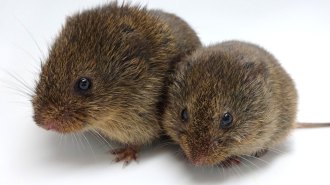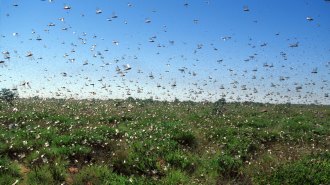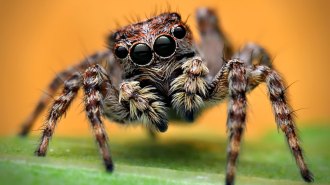Search Results

Voles Don’t Need Oxytocin to Bond
Scientists thought the “love hormone” oxytocin was required to help animals form social bonds. In this Guide, students will learn how a study using a gene-editing tool called CRISPR is questioning that perspective — at least for prairie voles.
CRISPR Explained
Students will learn how CRISPR gene-editing technology works and discuss its applications and its importance to research.
Learning Outcomes: Learning about CRISPR and why it is an important technology
Prairie voles can couple up even without the ‘love hormone
Students will answer questions about the online Science News article “Prairie voles can find partners just fine without the ‘love hormone’ oxytocin,” which explores how scientists upended a common understanding of the hormone by using CRISPR technology. A version of the article “Voles don’t need oxytocin to bond” appears in the February 25, 2023 issue of Science News.
Fermentation and Pasteurization in the classroom
The multitalented Louis Pasteur was a chemist, biologist, the father of microbiology and the inventor of pasteurization. In this hands-on lab, students will learn about Pasteur’s contributions by conducting an inquiry-based yeast fermentation experiment that explores the concept of pasteurization. In this experiment, students will observe, calculate and graph the volume of carbon dioxide produced by yeast during fermentation at different temperatures and identify the point where the yeast have been killed and pasteurization occurs.
Lake scavenger hunt
Lakes can vary in color based on levels of sediment, organic matter and algae. Sometimes though, a lake will stand out – not matching the other lakes in an area. Look for these anomalies by participating in a virtual lake scavenger hunt, and help figure out why these lakes don’t fit in! In this activity, students will learn how climate change influences lake color and will investigate lakes with irregular colors that have been impacted by natural or human-made forces.
Form fits function in extreme environments
From buildings to machines to household objects — and even in the natural world — the structure of something relates to its function. Sea urchin skeletons, for example, have a recurring geometric design called a Voronoi pattern that also shows up in honeycombs and dragonfly wings. The pattern probably strengthens the skeleton and could inspire the creation of strong, lightweight materials. In this activity, students will explore aspects of structure and function in everyday objects before applying the same concepts to the natural patterns found in sea urchin skeletons. Inspired by the sea urchin, students can use an engineering design process to brainstorm solutions to real-world problems.

Insect Swarms Might Electrify the Sky
Large swarms of insects could produce as much electricity as a storm cloud. In this guide, students will explore how insect-induced static electricity might affect the atmosphere, review the concepts of electric charge and electrostatic force, and apply those concepts to their own experiences and the biological phenomenon of insect swarms. In a quick activity, students will create a poem or song about serendipity in science.
Insect swarms get charged up
Students will read and answer questions about the online Science News article “Insect swarms might generate as much electric charge as storm clouds,” which explores how insect-induced static electricity might affect the atmosphere. A version of the article, “Insect swarms might electrify the sky” appears in the December 3, 2022 issue of Science News.
The Black Death’s genetic legacy
Students will read and answer questions about the online Science News article “Black Death immunity came at a cost to modern-day health.” A version of the article, “Plague immunity left a lasting mark,” appears in the November 19, 2022 issue of Science News.
Let population genetics be your guide to evolution
Population genetics bridges the basic concepts of genes and inheritance, often studied at the individual level, with the larger concept of how a species evolves. In this discussion, students will review basic genetics concepts and investigate an example of evolution within the human population.

News Stories Give Spiders a Bum Rap
Are your students creeped out by spiders? They aren’t alone. In this guide, students will learn about how inaccurate news coverage has promoted common misconceptions about the largely harmless critters. Students can also discuss misinformation, thinking about where they’ve encountered it before, its impacts and ways to correct it.
Spinning tales about spiders
Students will answer questions about the online Science News article “News stories have caught spiders in a web of misinformation,” which describes new research looking at how spiders are portrayed by the media. A version of the article, “News stories give spiders a bum rap” appears in the September 24, 2022 issue of Science News.